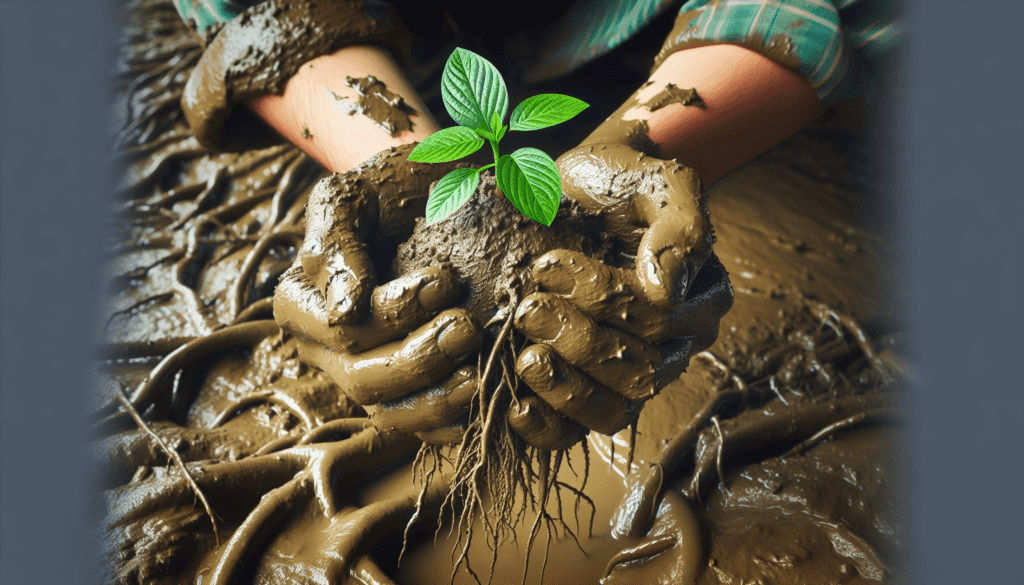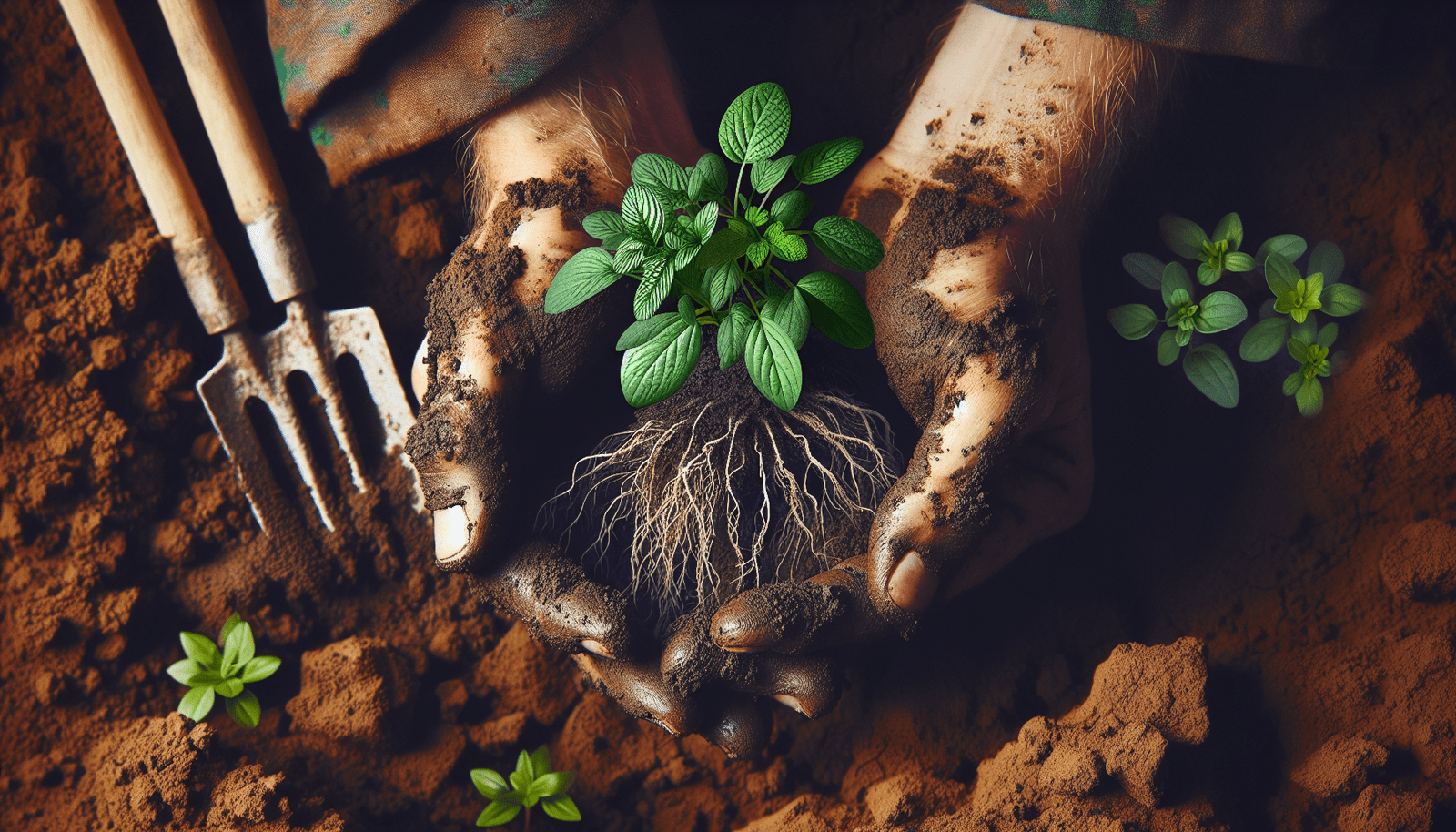Welcome to the ultimate guide on how to navigate gardening in clay soil! In this article, you will learn all the essential tips and tricks to help you successfully cultivate a beautiful garden in this challenging soil type. From choosing the right plants to improving soil drainage, we’ve got you covered. Say goodbye to frustration and hello to a thriving garden in clay soil! Have you ever wondered how to make your garden thrive in clay soil? It can be a bit challenging, but with the right tips and techniques, you can turn your clay soil into a flourishing garden paradise. Let me guide you through “The Essentials of Gardening in Clay Soil” and help you make the most out of your gardening experience.
Understanding Clay Soil
Clay soil is known for its tightly packed particles, which can lead to poor drainage and aeration. This type of soil tends to compact easily, making it difficult for plant roots to penetrate and thrive. However, clay soil is rich in nutrients, which can be beneficial for plants if managed properly. By understanding the characteristics of clay soil, you can make informed decisions when it comes to gardening.
Clay soil can feel sticky and heavy when wet, but it can also become hard and compacted when dry. This can pose challenges for gardeners, but with the right techniques, you can improve the quality of your clay soil and create a healthy environment for your plants to grow.
Tips for Improving Clay Soil
To improve clay soil, it’s essential to work on improving its structure and texture. One way to do this is by adding organic matter such as compost, aged manure, or leaf mold. These materials can help loosen clay soil, improve drainage, and provide essential nutrients for plant growth. Mixing organic matter into clay soil can also help create air pockets, allowing plant roots to penetrate more easily.
Another way to improve clay soil is by avoiding working on it when it’s too wet. Working on wet clay soil can lead to compaction, making it more challenging for plant roots to grow. It’s best to wait until the soil is dry enough to be worked without sticking to your tools.
Choosing the Right Plants for Clay Soil
When gardening in clay soil, it’s essential to choose plants that can thrive in these conditions. Some plants are more suitable for clay soil than others, as they have adapted to withstand the challenges of poor drainage and compacted soil. By selecting the right plants for your clay soil garden, you can ensure a successful and flourishing garden.
Some plants that do well in clay soil include:
| Plant Name | Sunlight Requirement | Bloom Season |
|---|---|---|
| Black-eyed Susan | Full Sun | Summer |
| Astilbe | Partial Shade | Spring |
| Coral Bells | Full Sun to Part Shade | Summer |
| Coneflower | Full Sun | Summer |
| Russian Sage | Full Sun | Summer |
It’s important to choose plants that are well-suited for the sunlight levels in your garden, as well as the specific conditions of your clay soil. By selecting plants that can thrive in clay soil, you can create a beautiful and healthy garden that will flourish year after year.

Proper Planting Techniques
When planting in clay soil, it’s crucial to pay attention to proper planting techniques to ensure the success of your garden. One essential technique is to amend the soil with organic matter before planting to improve drainage and aeration. This can help create a more favorable environment for plant roots to grow and thrive.
Another important technique is to dig a larger planting hole than you would in other types of soil. By digging a larger hole and loosening the soil around the planting area, you can help plant roots penetrate the clay soil more easily. It’s also recommended to backfill the planting hole with a mixture of compost and native soil to provide essential nutrients for plant growth.
Watering and Mulching
In clay soil, watering and mulching are essential practices to help maintain moisture levels and protect plant roots. Clay soil tends to retain water, which can lead to waterlogged conditions if not managed properly. By watering deeply and less frequently, you can encourage plant roots to grow deeper into the soil and become more resilient to drought conditions.
Mulching is another important practice in clay soil gardening, as it can help regulate soil temperature, retain moisture, and reduce weed growth. Organic mulches such as wood chips, straw, or shredded leaves are excellent choices for clay soil, as they can break down over time and improve soil structure. By mulching your garden regularly, you can create a healthier environment for your plants to thrive.
Fertilizing Techniques
Clay soil is naturally rich in nutrients, but it’s essential to provide additional fertilization to support plant growth. When gardening in clay soil, it’s important to use fertilizers that are specifically formulated for this type of soil. Slow-release fertilizers are a good choice for clay soil, as they can provide a steady supply of nutrients over an extended period.
Another important aspect of fertilizing in clay soil is to avoid overfertilizing, as this can lead to nutrient imbalances and potentially harm plant roots. It’s best to follow the recommended dosage on the fertilizer label and apply fertilizers at the right time of year to support plant growth. By using the right fertilizing techniques, you can ensure the health and vitality of your garden plants.
Soil Testing
Before fertilizing your garden in clay soil, it’s a good idea to conduct a soil test to determine its nutrient content and pH levels. Soil testing can help you understand the specific needs of your soil and make informed decisions when it comes to fertilizing. You can purchase a soil testing kit from your local garden center or contact a professional soil testing lab for more detailed results.
By analyzing the results of a soil test, you can determine the appropriate type and amount of fertilizer to apply to your clay soil garden. Soil testing can also help you identify any nutrient deficiencies or imbalances that may be affecting plant growth. By conducting regular soil tests, you can create a customized fertilizing plan that meets the needs of your garden plants.

Maintenance Tips for Clay Soil Gardens
Maintaining a garden in clay soil requires regular care and attention to ensure the health and vitality of your plants. By following some maintenance tips, you can create a thriving garden that will bring joy and beauty to your outdoor space.
Regular Weeding
Weeds can be a common problem in clay soil gardens, as they can compete with garden plants for nutrients and water. Regular weeding is essential to keep weeds under control and maintain a healthy garden environment. By pulling weeds regularly and using mulch to suppress weed growth, you can create a weed-free garden that allows your plants to thrive.
Pruning and Deadheading
Pruning and deadheading are essential practices in maintaining the health and appearance of your garden plants. By removing dead or diseased plant material, you can encourage new growth and prevent the spread of pests and diseases. Pruning can also help shape plants and promote better air circulation, which can reduce the risk of fungal infections in clay soil gardens.
Pest Control
Pests can be a nuisance in clay soil gardens, as they can damage plant foliage and reduce plant growth. It’s essential to monitor your garden regularly for signs of pests and take appropriate measures to control them. Natural pest control methods such as introducing beneficial insects, using insecticidal soaps, or applying neem oil can help keep pests at bay without harming the environment.
Conclusion
Gardening in clay soil can be challenging, but with the right tips and techniques, you can create a beautiful and healthy garden that will thrive year after year. By understanding the characteristics of clay soil, choosing the right plants, and following proper planting and maintenance techniques, you can turn your clay soil garden into a flourishing oasis of greenery and beauty. So roll up your sleeves, grab your gardening tools, and let’s get started on creating a stunning garden in clay soil!

